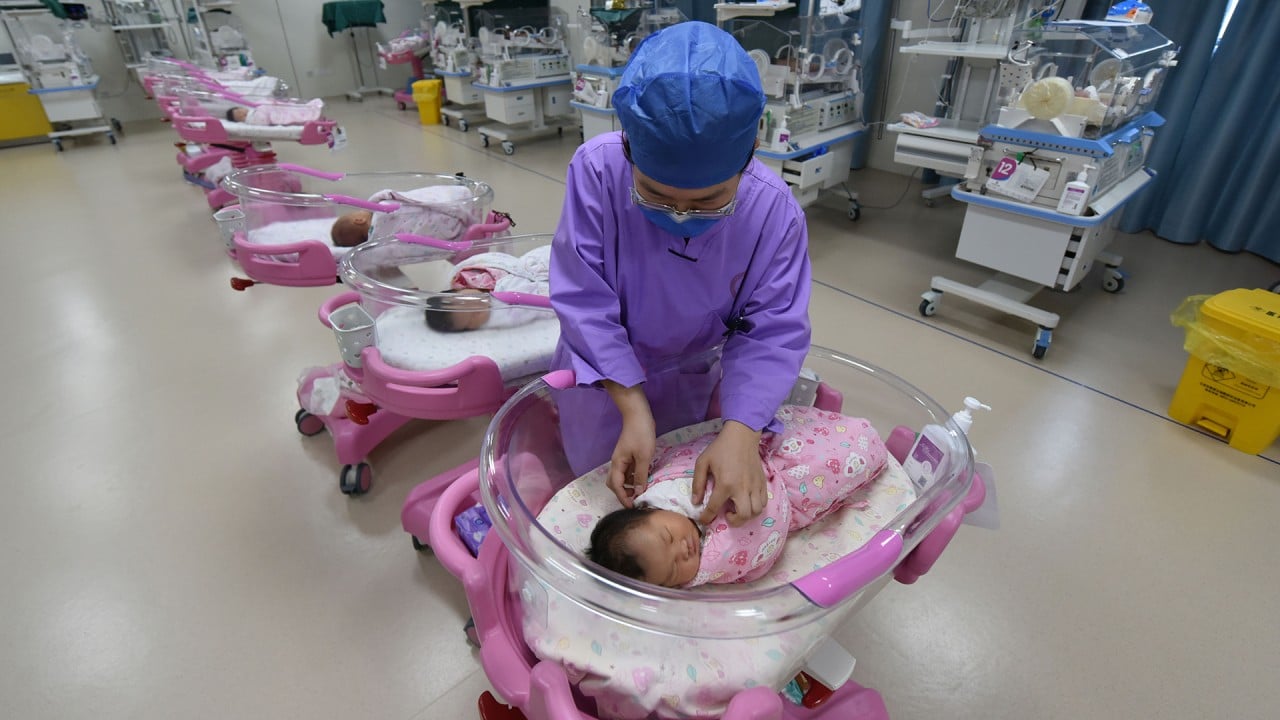
03:18
China reports first population decline in 6 decades, with birth rate at record low in 2022
Explainer | China population: 7 takeaways from 2022 figures
- China’s population fell by 850,000 to 1.4118 billion in 2022 as mothers had 9.56 million babies last year, compared with 10.41 million total deaths
- China’s national birth rate fell to a record low of 6.77 births for every 1,000 people in 2022, down from 7.52 in 2021
1. China’s population in 2022
This represented the first decline in China’s population since 1961.
China’s population includes 31 provinces, autonomous regions and municipalities, as well as servicemen, but excludes foreigners. It does not include Hong Kong, Macau or Taiwan.
In 2022, the national population growth rate was minus 0.6 per thousand.
2. Births in China in 2022
Mothers in China had 9.56 million babies last year, representing a 9.98 per cent drop from 10.62 million in 2021.
3. China’s birth rate in 2022
China’s national birth rate fell to a record low of 6.77 births for every 1,000 people in 2022, down from 7.52 in 2021, marking the lowest rate since records began in 1949.
4. Deaths in China in 2022
A total of 10.41 million people died in China in 2022.
The national mortality rate was 7.37 per thousand last year, putting the national growth rate at negative 0.6 per thousand people.
5. Gender divide in China in 2022
China’s male population in 2022 stood at 722.06 million, while the female population was 689.69 million.
6. Age structure in China in 2022
China’s working-age population – those between 16 and 59 years old – stood at 875.56 million at the end of 2022, representing 62 per cent of the population, down from 62.5 per cent a year earlier.
Last year, 280.04 million people were aged 60 and over, accounting for 19.8 per cent of the population.
Last year, 209.78 million people were aged 65 and over, up from 200 million in 2021. The 2022 total accounted for 14.85 per cent of the population, up from 14.16 per cent in 2021.
7. Urban-rural structure in China in 2022
Permanent residents in urban areas stood at 920.71 million, an increase of 6.46 million from a year earlier.
Permanent residents in rural areas stood at 491.04 million, a decrease of 7.31 million from a year earlier.
The share of the urban population in the total population was 65.22 per cent, 0.5 percentage points higher than a year earlier.
What they said …
“The contraction of the total population reflects the impact of the pandemic and the associated economic downturn on fertility demand. We continue to expect population contraction in 2023; infections and the long-term effects of Covid-19 could postpone household birth plans. Lockdowns in 2022 will also have a lagging impact on birth in 2023. At the same time, the death rate will stay above the pre-pandemic level tied to Covid-19 infections across the country.” - Yue Su, principal economist, The Economist Intelligence Unit
“China’s population declined for the first time since 1961. The population will likely trend down from here in coming years. This is very important, with implications for potential growth and domestic demand. China cannot rely on the demographic dividend as a structural driver for economic growth. Going forward, demographics will be a headwind. Economic growth will have to depend more on productivity growth, which is driven by government policies.” - Zhang Zhiwei, president and chief economist, Pinpoint Asset Management

.JPG?itok=J8tgfPmW&v=1659948715)